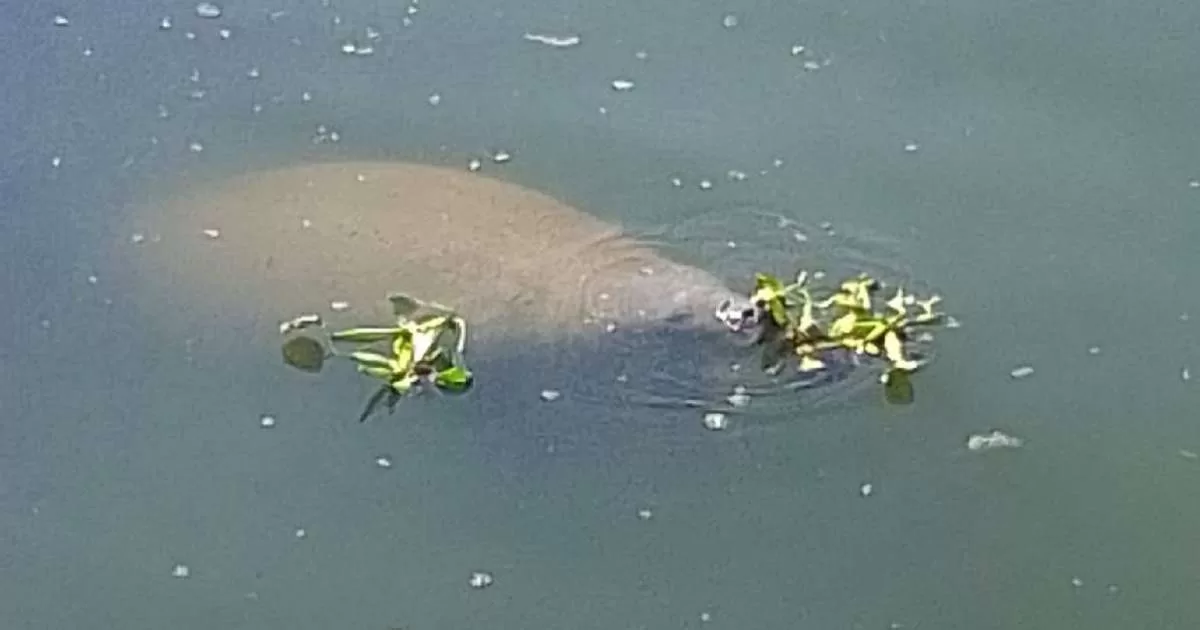Cuban children sighted a manatee swimming in the Almendares River, under the iron bridge in Havana, and captured beautiful images of the animal.
However, in the midst of the food crisis on the island, several people have expressed concern for the fate of the gentle visitor, asking residents in the area “not to eat it.”
The Internet user identified on Facebook as Abelardo Betancourt Cobas published in the group Photos of Havana the snapshots, where the manatee can be seen relaxing on the murky waters of the Almendares River.
“Children discover manatees on the iron bridge of Vedado,” he explained on the social network.
Several Cubans commented on the publication and affirmed that in the midst of the food crisis on the island, the life of the manatee was in danger. “Poor little animal, right now they eat it”, “I hope they save it before they eat it or it gets infested with that contaminated water”, were some of the publications.
Others recalled that this native species of Cuban fauna that is in critical danger of extinction “is protected and its fishing is prohibited.”
The sighting of manatees is not common on the island, where alarms have grown due to fears that this incredible animal of the marine fauna will disappear.
Last year a family of manatees was sighted in the San Juan river, in the province of Matanzas, which drew the attention of residents in the area.
Also a large manatee was sighted in the Santa Cruz del Norte fishing areain the Mayabeque province.
In 2021, the sighting of a copy in Santa Fe, in Havana.
“The Antillean Manatee (Trichechus manatus) is the most sui generis that inhabits the coasts of Cuba. It can reach up to 4 meters in length and a maximum weight of 1,500 kg. Spotting it is a privilege for any Cuban,” Cuban botanist and environmentalist Alejandro Palmarola said two years ago.
The coasts of Havana have historically been natural sighting areas for this species, so the manatees “are neither lost nor sick, they are at HOME,” he said.
Cuban specialists indicate that the decrease in human activities in coastal areas during the Covid-19 pandemic was favorable for many species to return to their natural sites or it is simply easier to see them.
“It is true that one of the main threats to this jewel of Cuban fauna has historically been its illegal hunting. Therefore, we must be alert,” they said.
people who have the joy of seeing a manatee should not try to touch it, stalking, hitting or hurting him. Neither swim holding it nor ride on its back. They should not be offered food or water, much less encourage the mothers to separate from their young, they explained.
When observing a manatee, it is advisable to keep your distance and respect the natural behavior of the animal. If their presence is detected from a boat, it is best to stop driving or slow down if you go in a parallel direction, because many of these animals suffer injuries from boat engines.
They can be photographed and recorded without the need to touch or attack them.
Specialists indicate that touching manatees can cause them to “get used to human beings and not all people who are interested in them do it with good intentions. Poachers look like you and he can’t tell the difference. Fear natural’ protects the manatees from these people.


